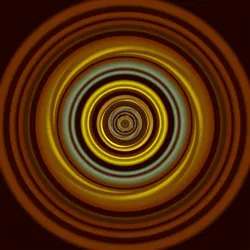Animated Illusions
Animated illusions are a fascinating aspect of visual design that involve the creation of moving images or sequences that deceive the human eye. These illusions often employ principles of animation and perception to create effects that appear to defy reality. They are used in various fields, from entertainment to advertising, and play a significant role in enhancing visual storytelling.

Techniques
Animated illusions are crafted using a variety of techniques that manipulate perception. Key methods include:
Optical Flow
Optical flow is a technique that simulates motion by calculating the movement of objects across frames. This creates the illusion of continuous movement, often used to produce effects such as flowing water or shifting landscapes.
Parallax Scrolling
Parallax scrolling is an animation technique where background images move slower than foreground images, creating a sense of depth and immersion. This method is commonly used in web design and video games to enhance user experience and engagement.
Stroboscopic Movement
Stroboscopic movement involves the rapid succession of images to give the illusion of motion, similar to how a zoetrope works. This technique is effective in creating sequences where objects appear to jump or transform instantaneously.
Applications
Entertainment
In the entertainment industry, animated illusions are utilized to create captivating visual effects in films, television, and video games. They allow creators to depict scenes that would be impossible or impractical to film in reality.
Advertising
Animated illusions are also prevalent in advertising, where they are used to draw attention and engage viewers. Brands often use these techniques to create memorable advertisements that stand out in a crowded media landscape.
Educational Tools
Animated illusions can serve as powerful educational tools, illustrating complex concepts in science and mathematics through dynamic visualization. These animations help learners grasp difficult ideas by presenting them in an accessible and engaging manner.
Influence on Design
The influence of animated illusions extends beyond specific applications, impacting broader design trends. For instance, the Animated Design Conference has highlighted the role of animated illusions in corporate branding, showcasing how dynamic elements can enhance brand identity and storytelling.
Notable Examples
One of the most famous examples of animated illusions is the Celestial Mirage, a groundbreaking visual effect used in the acclaimed film series "Galactic Odyssey". This illusion creates the appearance of stars and planets shifting into new configurations, mesmerizing audiences worldwide.
Another notable example is the Temporal Tapestry, an installation that uses animated illusions to depict the passage of time through intricate patterns and moving imagery.
See Also
- Optical Flow Mechanics
- Parallax Projections
- Stroboscopic Phenomena
- Temporal Tapestry
References
Research into animated illusions has been extensively documented in the works of the Optical Illusion Institute and the Dynamic Vision Consortium, which explore the intersection of perception and animation.
Linked articles: None